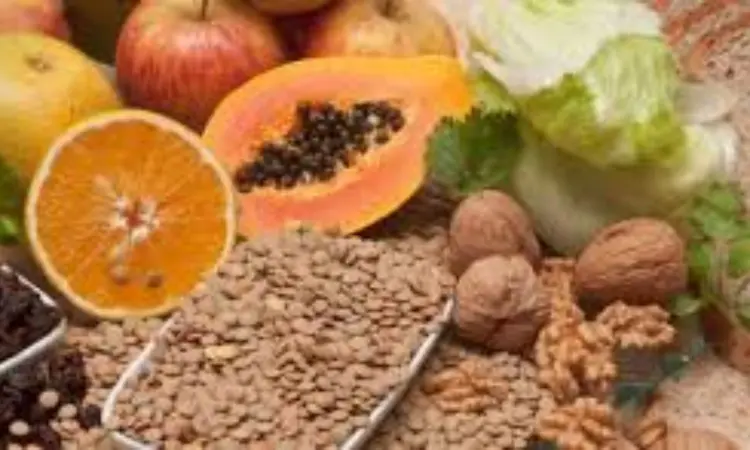- Home
- Medical news & Guidelines
- Anesthesiology
- Cardiology and CTVS
- Critical Care
- Dentistry
- Dermatology
- Diabetes and Endocrinology
- ENT
- Gastroenterology
- Medicine
- Nephrology
- Neurology
- Obstretics-Gynaecology
- Oncology
- Ophthalmology
- Orthopaedics
- Pediatrics-Neonatology
- Psychiatry
- Pulmonology
- Radiology
- Surgery
- Urology
- Laboratory Medicine
- Diet
- Nursing
- Paramedical
- Physiotherapy
- Health news
- Fact Check
- Bone Health Fact Check
- Brain Health Fact Check
- Cancer Related Fact Check
- Child Care Fact Check
- Dental and oral health fact check
- Diabetes and metabolic health fact check
- Diet and Nutrition Fact Check
- Eye and ENT Care Fact Check
- Fitness fact check
- Gut health fact check
- Heart health fact check
- Kidney health fact check
- Medical education fact check
- Men's health fact check
- Respiratory fact check
- Skin and hair care fact check
- Vaccine and Immunization fact check
- Women's health fact check
- AYUSH
- State News
- Andaman and Nicobar Islands
- Andhra Pradesh
- Arunachal Pradesh
- Assam
- Bihar
- Chandigarh
- Chattisgarh
- Dadra and Nagar Haveli
- Daman and Diu
- Delhi
- Goa
- Gujarat
- Haryana
- Himachal Pradesh
- Jammu & Kashmir
- Jharkhand
- Karnataka
- Kerala
- Ladakh
- Lakshadweep
- Madhya Pradesh
- Maharashtra
- Manipur
- Meghalaya
- Mizoram
- Nagaland
- Odisha
- Puducherry
- Punjab
- Rajasthan
- Sikkim
- Tamil Nadu
- Telangana
- Tripura
- Uttar Pradesh
- Uttrakhand
- West Bengal
- Medical Education
- Industry
Intake of insoluble dietary fibre from different sources tied to lower risk of hypertension

China: A recent study in BMC Medicine has suggested that an appropriate quantity of insoluble fibres from several food sources plays a critical role in the primary prevention of hypertension.
The study showed an inverse relationship between the variety of insoluble fibres with appropriate quantities from different food sources (vegetable, fruit, whole grain, tuber, and bean) and new-onset hypertension in Chinese adults, implying that consumption of more insoluble fibres can be beneficial from a hypertension standpoint.
The researchers, however, noted some limitations to the study; for instance, the study used information from self-reported hypertension which may bias these results.
Globally, hypertension is the leading cause of CVD (cardiovascular disease) and all-cause mortality. Its prevalence is still on the rise in low and middle-income countries. Therefore, it becomes essential to identify more modifiable factors for the primary prevention of hypertension.
Recently, there has been rising interest in studies of nutrients and hypertension risk. Dietary fibre formed of indigestible and non-absorbable carbohydrate polymers is mainly found in the plant-based diet. Previous studies have shown the variation in the amount and composition of dietary fibres from food to food. Studies have consistently reported the beneficial effect of dietary fibres on CVD varied remarkably with its food sources and solubility.
The relationship between the variety of insoluble fibre sources with new-onset hypertension has yet to be examined. Addressing this knowledge gap, Ziliang Ye from Southern Medical University in Guangzhou, China, and colleagues aimed to determine the associations between the variety and quantity of insoluble fibres intake from six major food sources and new-onset hypertension, using data from the CHNS (China Health and Nutrition Survey).
For this purpose, the researchers included twelve thousand one hundred thirty-one participants who did not have hypertension at baseline. Three consecutive 24-h dietary recalls in combination with a household food inventory measured dietary intake. The variety score of insoluble fibre sources was defined as the number of consumption of insoluble fibre sources at the appropriate level, accounting for both quantities and types of insoluble fibres.
The study outcome was new-onset hypertension, defined as BP (blood pressure) greater than 140/90 mmHg, or receiving antihypertensive treatments, or physician-diagnosed hypertension. Four thousand two hundred fifty-two participants developed hypertension during a median follow-up of 6.1 years.
The study led to the following findings:
- There were L-shaped associations of dietary insoluble fibres derived from beans, vegetables, fruits, and tubers with new-onset hypertension; a reversed J-shaped association of whole grain-derived insoluble fibre with new-onset hypertension; and no apparent association of refined grain-derived insoluble fibre with new-onset hypertension. Therefore, the insoluble fibre variety score calculation did not include refined grain.
- A higher insoluble fibre variety score was remarkably associated with lower risks of new-onset hypertension (per score increment, hazard ratio, 0.50).
To conclude, there was an inverse association between the variety of insoluble fibres with a suitable quantity from several food sources and new-onset hypertension.
"If our results are confirmed further, these findings support that intake of an appropriate insoluble fibre quantity from various food sources plays an important role in hypertension's primary prevention," the researchers wrote.
Reference:
Ye, Z., Wu, Q., Yang, S. et al. Variety and quantity of dietary insoluble fiber intake from different sources and risk of new-onset hypertension. BMC Med 21, 61 (2023). https://doi.org/10.1186/s12916-023-02752-7
Dr Kamal Kant Kohli-MBBS, DTCD- a chest specialist with more than 30 years of practice and a flair for writing clinical articles, Dr Kamal Kant Kohli joined Medical Dialogues as a Chief Editor of Medical News. Besides writing articles, as an editor, he proofreads and verifies all the medical content published on Medical Dialogues including those coming from journals, studies,medical conferences,guidelines etc. Email: drkohli@medicaldialogues.in. Contact no. 011-43720751


